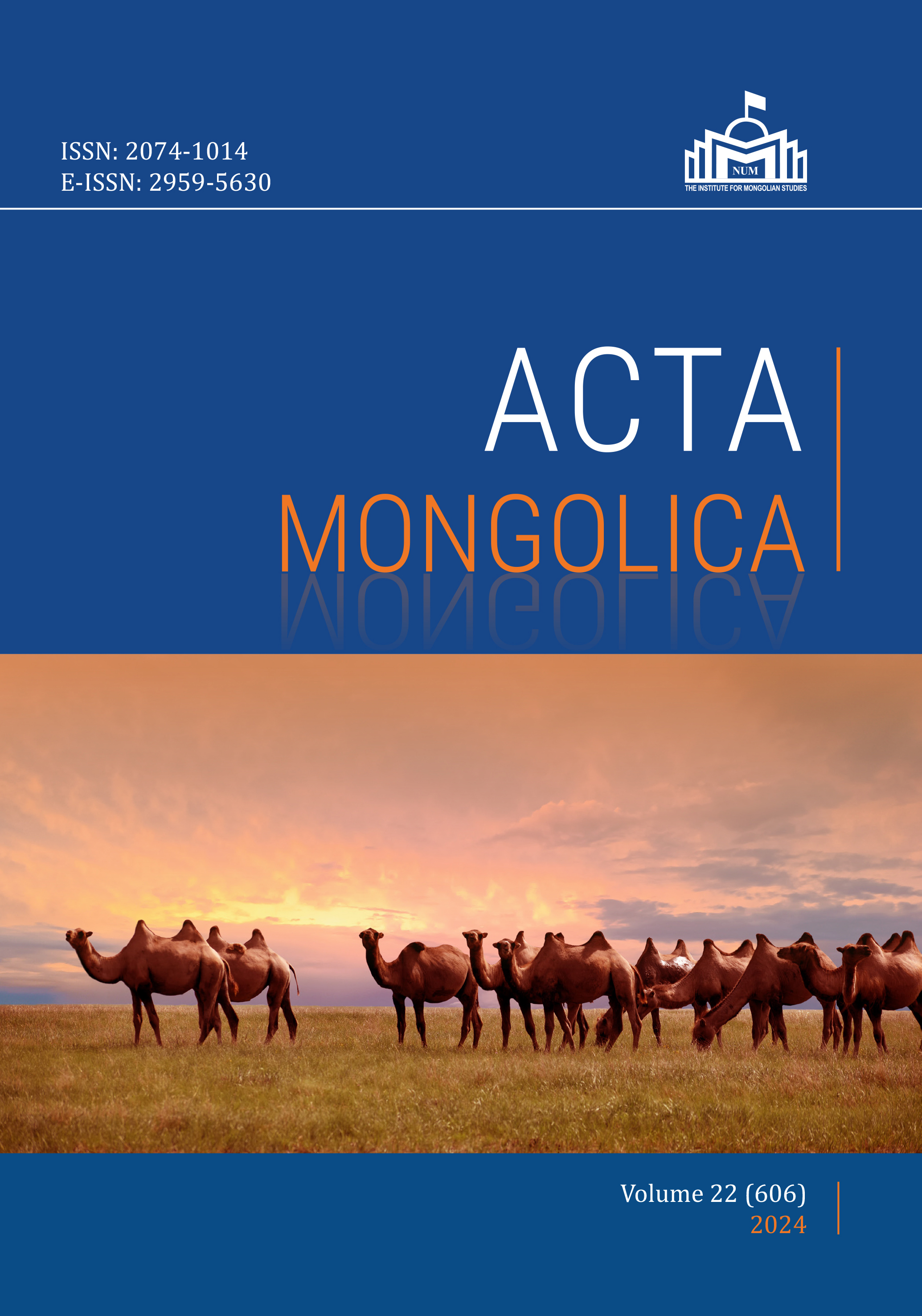The Mongol “Other” The Mongol “Other”: Exploring Representations of a Mysterious and Distant Nation in Western European Sources of the 13th Century
Main Article Content
Abstract
The Mongol Empire, founded by Chinggis Khan (Чингис хаан)[1], was the most extense empire in history. It covered a vast area from eastern China to southern Persia, and reached Hungary in the west. The empire’s fast growth in the 13th century surprised the whole world, including Western Europe which knew little about the Mongols, often called Tartars, at that time. This study analyses how these portrayals were different according to the authors’ contact with the Mongols, and how they changed over a few decades, from viewing them as an enigmatic ally against Islam or a negligible pagan society, to being considered “wild barbarians” and eventually an exotic, mysterious and powerful nation. This paper suggests that Mongol representations in chronicles, letters, and travel accounts were influenced by factors such as cultural differences, geographical distance, and European political and religious identities. It provides valuable insight into how the West perceived the Mongols during the 13th century, illuminating the broader cultural and historical context of the time.
[1] To ensure accuracy and clarity, all Mongolian names will be provided along with their transliterated forms in the Cyrillic alphabet, considering the variations that may appear in Western sources
Article Details

This work is licensed under a Creative Commons Attribution-ShareAlike 4.0 International License.
References
B. Szabó, János. 2007. A tatárjárás. A mongol hódítás és Magyarország. Budapest: Corvina.
Beazley, C. Raymond. 1903. The Texts and Versions of John de Plano Carpini and William de Rubruquis. London: Hakluyt Society.
Bendefy, László. 1936. Az Ismeretlen Juliánusz. Budapest: Stephaneum.
Blurton, H. 2007. “Tartars and Traitors: The Uses of Cannibalism in Matthew Paris’s Chronica Majora”, in: Cannibalism in High Medieval English Literature. The New Middle Ages. New York: Palgrave Macmillan, pp 81-104. https://doi.org/10.1007/978-1-137-11579-9_5
Coulter, Matthew. 2022. “Patterns of communication during the 1241 Mongol invasion of Europe: insights from the Ottobeuren letter collection”, Journal of Medieval History, 48:4, pp 496-523, DOI: 10.1080/03044181.2022.2101020
Da Pian del Carpine, Giovanni. 1996. The story of the Mongols whom we call the Tartars. Translated by Erik Hildinger. Boston, MA: Branden.
Frater Ricardus. 2009. De Facto Ungariæ Magnæ. Translated by Marc Szwaicer. Avaliable on: http://remacle.org/bloodwolf/historiens/richard/hongrie.htm (Accessed June 2023)
Grousset, René. 1970. The Empire of the Steppes. New Brunswick: Rutgers University Press.
Gy. Ruitz, Izabella. 2003. “Levelek a Tatárjárás Korából” in Balázs Nagy (ed.) Tatárjárás. Budapest: Osiris Kiadó.
Huygens, R. B. C. 1960. Lettres de Jacques de Vitry. Leiden: Brill.
Mitchell, Robert & Nevill Forbes. 1914. The Chronicle of Novgorod. London: Offices of the Society.
Molnár, Miklós. 2001. A Concise History of Hungary. Cambridge: Cambridge University Press.
Długosz, Jan. 2003. A lengyel királyság évkönyvei (részletek). Translated by András Németh in Nagy, Balázs Nagy (ed.) Tatárjárás. Budapest: Osiris Kiadó, pp. 211-226.
Paris, Matthieu. 1840. Grande Chronique - tome IV. Translated by A. Huillard-Bréholles. Paris: Paulin.
Rimanyi, Aron. 2018. “Closing the steppe highway: A new perspective on the travels of Friar Julian of Hungary.” Annual of Medieval Studies at CEU, Vol. 24, pp. 99-112.
Saunders, J. J. 1969. VII. “Matthew Paris and the Mongols”, in T.A. Sandquist and M.R. Powicke (eds.) Essays in Medieval History. Toronto: Toronto University Press, pp. 116–132. doi:10.3138/9781487583521-007
Saint Quentin, Simon. 2019. History of the Tartars. Available on: http://www.simonofstquentin.org (Accessed June 2023)
Sugar, Peter F.; Péter Hanák; Tibor Frank. 1990. A History of Hungary. Bloomington & Indianapolis: Indiana University Press.
V. Kovács, Sándor. 1984. A magyar középkor irodalma. Budapest: Alföldi Nyomda
Wedgwood, Hensleigh. 1855. “On False Etymologies”. Transactions of the Philological Society, Vol. 6, pp. 62-72.
Werner, Gregor. 2016. “Travelling Towards the Peoples of the Endtime: C de Bridia as Religious Re-interpretation of Carpini”, in Wolfram Brandes; Felicitas Schmieder; Rebekka Voß (eds.). Peoples of the Apocalypse: Eschatological Beliefs and Political Scenarios. De Gruyter. pp. 83–95. doi:10.1515/9783110473315-005

